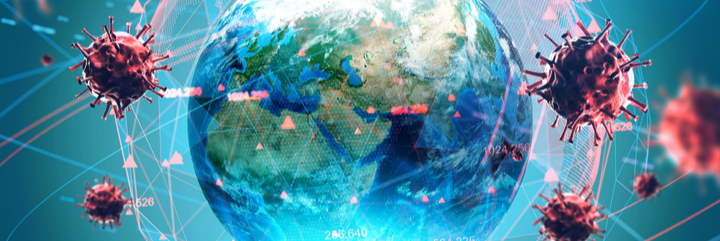Key Takeaways
Trevor Tompson reported NORC’s latest findings on the American Consumer’s attitude towards COVID-19 and the resulting economic crisis. Cliff Young reported on IPSOS’s international panel augmented with other sources to paint a picture of the international environment. We have synthesized these two reports into one set of key takeaways.
Fear
- In late March, 50% of Americans were very or extremely worried that they or someone in their family would contract COVID-19. That more than doubled the number concerned in mid-February. Republicans showed concern at a rate half that of Democrats, though partisan differences in claimed social distancing behaviors were more muted. By early April, 77% of Americans felt that the virus was a high or very high threat to their country. This is similar to the global average of 75%.
- In late March, only 39% of Americans were very confident that the U.S. Healthcare system could handle the virus.
- American consumer confidence dropped from 63 to 46 during the month of March. Global confidence dropped similarly leaving a desperately ill Italy at a low of 32 and a recovering China at 60.
Actions
- More than 90% had stocked up on food and cleaning supplies, however a quarter of these used credit cards that will leave them with debt for some time.
- 81% of Americans said they would stay at home until health officials said it was safe to return to work. However, around a quarter of Republicans and 18 – 39 year olds favored going back sooner to start the economy.
- 55% of Americans are self-quarantined. 45% told to work remotely.
Trust and Support
- Wide support for financial assistance to hospitals and small business, but only 36% support financial aid to airlines and tourism business.
- Americans trust scientists at the CDC (85%) and WHO (75%) for accurate information. State (72%) and local governments (71%) are also trusted. The federal government and the national media are trusted by 50 to 55% of Americans.
Approval
- 63% of Republicans and 21% of Democrats approve of the Federal Government’s handling of the crisis. Approval averaged about 60% for state and local government for both parties.
- War presidents generally benefit from a rally effect, and while there was some indication of this a month ago, it has largely disappeared with the president’s disapproval rating sitting at 55 and 56% across the two studies.
Impact
- Half said their paychecks have been affected. 19% have been furloughed; 17% worked for businesses that have closed.
- An analysis of 9/11 and Superstorm Sandy suggests that rates of emotional distress such as sleeplessness or nervousness doubled and persisted for two years or more in affected neighborhoods. This crisis is likely different in that in prior crises, friends and family were the best antidote to these emotions. Isolation is likely to exacerbate these conditions.
- 34% of Americans claim to have a change in their mental health and 41% have said they have had a change in their emotional well-being.
The Future
- 46% of Americans think things will return to normal by June. 78% of Chinese respondents thought so.
- Wartime presidents are generally re-elected. Recession presidents are generally not.
- The new normal will likely have a lasting impact on American attitudes toward health, hygiene and healthcare. Panelists expected a U shaped, not V shaped economic recovery.
- The pandemic has exacerbated inequalities in US society. Panelists described two Americas. There is a more affluent, educated America which is able to self-isolate and work from home without suffering economic hardship. Conversely there is the America that was laid off, furloughed or who have to work at their grocery stores, bus routes and other civil service roles because they cannot afford to do otherwise.
Recorded Event:
Presentations:

